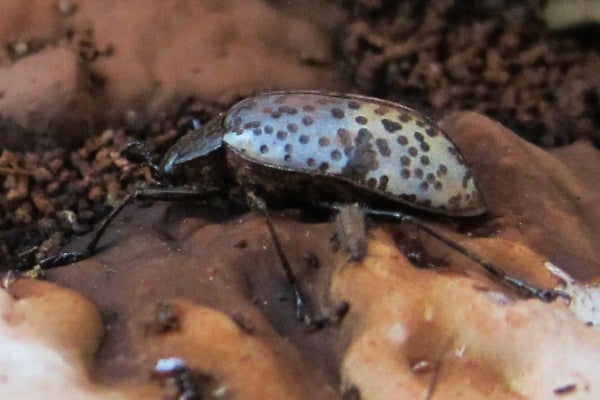This article was published in Scientific American’s former blog network and reflects the views of the author, not necessarily those of Scientific American
As I'd hoped, several readers wrote to me either in a comment or by email to alert me to the identity of the beautiful beetle in my last post. Thank you to everyone who took the time to help me out! Somehow, the name still managed to exceed my expectations, because it was not “spotted blue beetle”, nor “Ganoderma beetle”, or even "mountain fungus beetle", but “pleasing fungus beetle” of the “Pleasing Fungus Beetle Family” (the Erotylidae). Entomologists, you know how to name your critters.

Am I pleasing?
But not when it comes to Latin names, apparently. The scientific name of our subject is Gibbifer californicus. It does not occur in California. Rather, its range is Wyoming, Colorado, New Mexico, Arizona, Kansas and Mexico. The mistake occurred, entomologist Arthur Evans informed me by email, when the French coleopterist Jean Theodore Lacordaire first described the beetle in 1842 from specimens mistakenly labeled as collected in California.
On supporting science journalism
If you're enjoying this article, consider supporting our award-winning journalism by subscribing. By purchasing a subscription you are helping to ensure the future of impactful stories about the discoveries and ideas shaping our world today.
I'm not the only one who thought the pupae looked like hanging bats, either. This fact sheet concurs that groups of pupae resemble a bat roost. It also says, amazingly, that there is only one generation per year. I would have expected several based on all the different life stages I observed. If so, I was very lucky indeed to catch them when I did.
The fact sheet also calls the beetle a “very distinctive insect”, an assessment I certainly support. According to CU biologist Jeff Mitton, there is no other beetle that resembles the pleasing fungus beetle its range, so it's likely the custom paint job advertises the presence of nasty defensive chemicals – and ensures our beetle looks good while doing so.